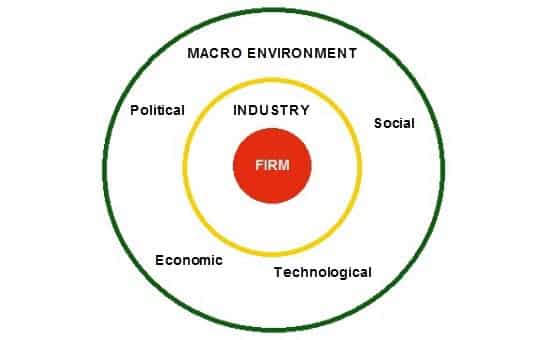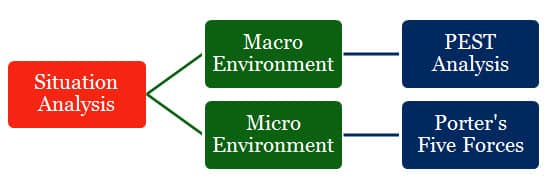Understanding the big picture can help reveal hidden opportunities and threats
1. Background
In 1967, Harvard Professor Francis Aguilar wrote a book entitled “Scanning the Business Environment” in which he identified four important factors – Economic, Technical, Political, and Social – that a business can use to better understand the big picture.
While the ordering of the letters may have changed, the four factors that Aguilar identified 47 years ago have not, and they form the basis of PEST Analysis.
2. Relevance
If you are thinking about producing a strategic plan, developing a new product, entering a new market, engaging in a new venture, or financing a project then it probably makes sense to understand the big picture issues that could affect your success.
Conducting a PEST Analysis can reveal hidden opportunities and threats, and allow you to adapt your approach to achieve a more favourable result.
3. Importance
There is something inherently appealing about a four-part model, and its simplicity makes PEST Analysis a convenient and practical tool for understanding the macro environment.
Conducting a PEST Analysis can be helpful for three reasons:
- Seeing Clearly: Understanding the big picture can help a business make informed decisions, and avoid making incorrect assumptions based on past experience with other projects.
- Anticipating Change: Understanding the macro environment can help a business anticipate change, take advantage of opportunities and manage potential threats.
- Rejecting Projects: Understanding the macro environment can help a business (and its financiers) identify projects that are likely to fail due to unfavourable conditions. Knowing which battles not to fight can be half the battle.
4. PEST Analysis Explained
“PEST” is an acronym that stands for “Political, Economic, Social and Technological” – four important factors for a business to consider when scanning the macro environment.
PEST Analysis is a simple framework that uses these four factors to examine the macro environment and identify potential implications for a business unit, product or project. Insights gained from the analysis can then be used to develop a strategic plan of action.
PEST Analysis is often used as part of a broader situation analysis.
There is a long list of alternative frameworks that you could use to scan the macro environment. However, they generally complicate the analysis by adding factors that could have been dealt with more simply using PEST Analysis.
That being said, feel free to use any framework that best suits your purpose. Some of the other variations include:
- SLEPT: Social, Legal, Economic, Political, and Technological
- PESTEL: Political, Economic, Social, Technological, Environmental, and Legal
- PESTELI: Political, Economic, Social, Technological, Environmental, Legal, and Industry Analysis
- STEEPLED: Social, Technological, Economic, Environmental, Political, Legal, Ethical, and Demographic
- PESTLIED: Political, Economic, Social, Technological, Legal, International, Environmental, Demographic
- LONGPESTLE: Local, National, and Global versions of PESTLE (might be useful for multinational organisations)
5. Conducting a PEST Analysis
Conducting a PEST Analysis involves considering issues relating to the four key factors: Political, Economic, Social, and Technological.
The four factors will vary in significance depending on the nature of the business. For example, social factors might be quite relevant for a retail business, but political factors will be more relevant for a global munitions dealer.
The purpose of a PEST Analysis is to identify potential implications for a specific business unit, product or project. Make sure you are clear on the central purpose of your analysis before commencing.
Insights gained from the analysis can then be used to develop a strategic plan of action.
Below we set out a list of issues that you might want to consider when conducting a PEST Analysis.
5.1 Political
Potential political issues include:
- Laws and regulations that a company may need to comply with (tax, competition, consumer protection, employment law, environmental regulations, anti-discrimination, corporate social responsibility, international law)
- Property rights, including protection of intellectual property (trade marks, copyright, patents, registered designs, trade secrets, software and circuit layouts)
- Industry regulation. How is the industry regulated? Are there planned changes? Is there a trend towards regulation or deregulation?
- Government policy, trade unions, lobby groups, and the electoral cycle. Who holds the power? How might this change at the next election?
- Rule of law, bureaucracy and corruption
- Political stability, war and conflict
5.2 Economic
Potential economic issues include:
- GDP, and economic growth rates
- Inflation, interest rates, and monetary policy
- Exchange rates (consider exchange rate volatility and the need for a swap agreement)
- Availability of credit (consider also the liquidity and depth of the credit markets)
- Labour costs and the unemployment rate. Will it be affordable/easy to hire skilled workers?
- Government support (e.g. infrastructure investment, grants, subsidies, tax breaks)
- Tax issues (corporate, employee, and value added taxes)
- Trade restrictions (tariffs and quotas)
- Business cycle, stock market trends, market prices, and seasonality issues
- Consumer confidence
- Industry specific factors
5.3 Social
Potential social issues include:
- Population growth
- Age distribution and life expectancy. Are generational shifts in attitude likely to affect what you’re doing?
- Income distribution, average disposable income, and social mobility
- Attitudes towards work
- Family size and structure
- Health levels, and health consciousness (e.g. attitudes towards smoking)
- Education levels
- Emphasis on safety
- Social norms (e.g. people tend to take holidays in summer)
- Fashions, fads, trends, role models, and influential personalities
- Buying patterns and consumer preferences (e.g. brand preferences, and attitudes toward product quality, customer service, fair trade, green, and organic)
- Ethnic and religious factors
- Cultural and sporting events
- Prohibitions, taboos, and ethical issues
5.4 Technological
Technological issues relate to the state of technology and the rate of innovation and may have implications for the competitive intensity of an industry (e.g. new technologies can reduce barriers to entry), and may result in disruptive innovation (e.g. online education).
Potential technological issues include:
- Emerging technologies and trends (e.g. 3D printing, collaborative consumption, and wearable technology)
- Technology level and rate of change in an industry
- Technology lifecycle
- Location of technology hubs or clusters; university and business partnerships
- Supporting infrastructure (e.g. high speed internet)
- R&D spending
- Availability of financing (investment and grant funding)
- Automation
- Legal frameworks, for example, protection of intellectual property (patents, registered designs, software and circuit layouts), and support for crowd funding
6. Template
Please download our PEST Analysis Template.
For more information on consulting concepts and frameworks, please download “The Little Blue Consulting Handbook“.

